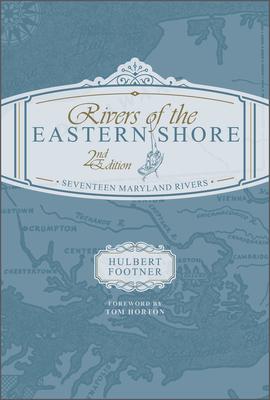
Book
Rivers of the Eastern Shore, 2nd Edition: Seventeen Maryland Rivers
(Write a Review)
Hardcover
$29.99
Literary writer Hulbert Footner (1879-1944) tells the story of Maryland's Eastern Shore through his colorful narratives of 17 fascinating rivers. His story begins from the day European settlers landed and encountered the Indigenous peoples and expands to the early 20th century. Each river has its own story, character, and beauty, told during Footner's rambling tours. He writes in vivid, glowing prose about the Eastern Shore's people, customs, towns, and houses. He speaks of its politics, economics, and lifeways. This region is rich with American history, from the Revolution, War of 1812, and Civil War to the trade of enslaved Africans and the oyster wars over its great natural resource. Footner captures it all in the following chapters:
1. Beginnings
2. William Claiborne
3. Colonel Edmund Scarburgh
4. The Picaroons
5. The Pocomoke River
6. The Little and the Big Annemessex
7. The Manokin
8. The Wicomico
9. The Nanticoke River
10. The Dorchester Marshes
11. The Little Choptank
12. The Choptank River, Part One
13. The Choptank River, Part Two
14. The Town of Oxford
15. The Tred Avon River
16. St. Michaels
17. The Miles River
18. The Lloyds of Wye
19. The Wye River
20. The Chester River
21. Chestertown
22. The Sassafras and Bohemia Rivers
Both text and illustrations are faithfully reproduced from the original publication, augmented by a biographical sketch written by Footner's granddaughter and a foreword by noted nature writer Tom Horton. Indeed, references to the Chesapeake Bay's impact on the land--what we now call climate change--are presciently discussed by Footner in 1944, making the book relevant to today's environmental stewards and lovers of the bay.
Literary writer Hulbert Footner (1879-1944) tells the story of Maryland's Eastern Shore through his colorful narratives of 17 fascinating rivers. His story begins from the day European settlers landed and encountered the Indigenous peoples and expands to the early 20th century. Each river has its own story, character, and beauty, told during Footner's rambling tours. He writes in vivid, glowing prose about the Eastern Shore's people, customs, towns, and houses. He speaks of its politics, economics, and lifeways. This region is rich with American history, from the Revolution, War of 1812, and Civil War to the trade of enslaved Africans and the oyster wars over its great natural resource. Footner captures it all in the following chapters:
1. Beginnings
2. William Claiborne
3. Colonel Edmund Scarburgh
4. The Picaroons
5. The Pocomoke River
6. The Little and the Big Annemessex
7. The Manokin
8. The Wicomico
9. The Nanticoke River
10. The Dorchester Marshes
11. The Little Choptank
12. The Choptank River, Part One
13. The Choptank River, Part Two
14. The Town of Oxford
15. The Tred Avon River
16. St. Michaels
17. The Miles River
18. The Lloyds of Wye
19. The Wye River
20. The Chester River
21. Chestertown
22. The Sassafras and Bohemia Rivers
Both text and illustrations are faithfully reproduced from the original publication, augmented by a biographical sketch written by Footner's granddaughter and a foreword by noted nature writer Tom Horton. Indeed, references to the Chesapeake Bay's impact on the land--what we now call climate change--are presciently discussed by Footner in 1944, making the book relevant to today's environmental stewards and lovers of the bay.
Hardcover
$29.99